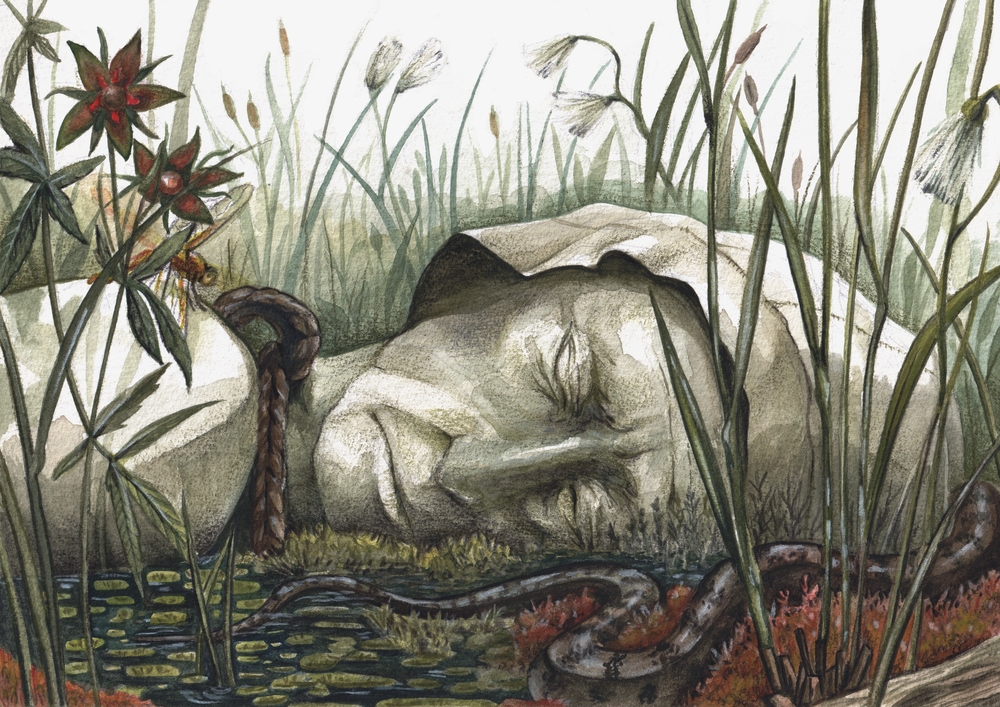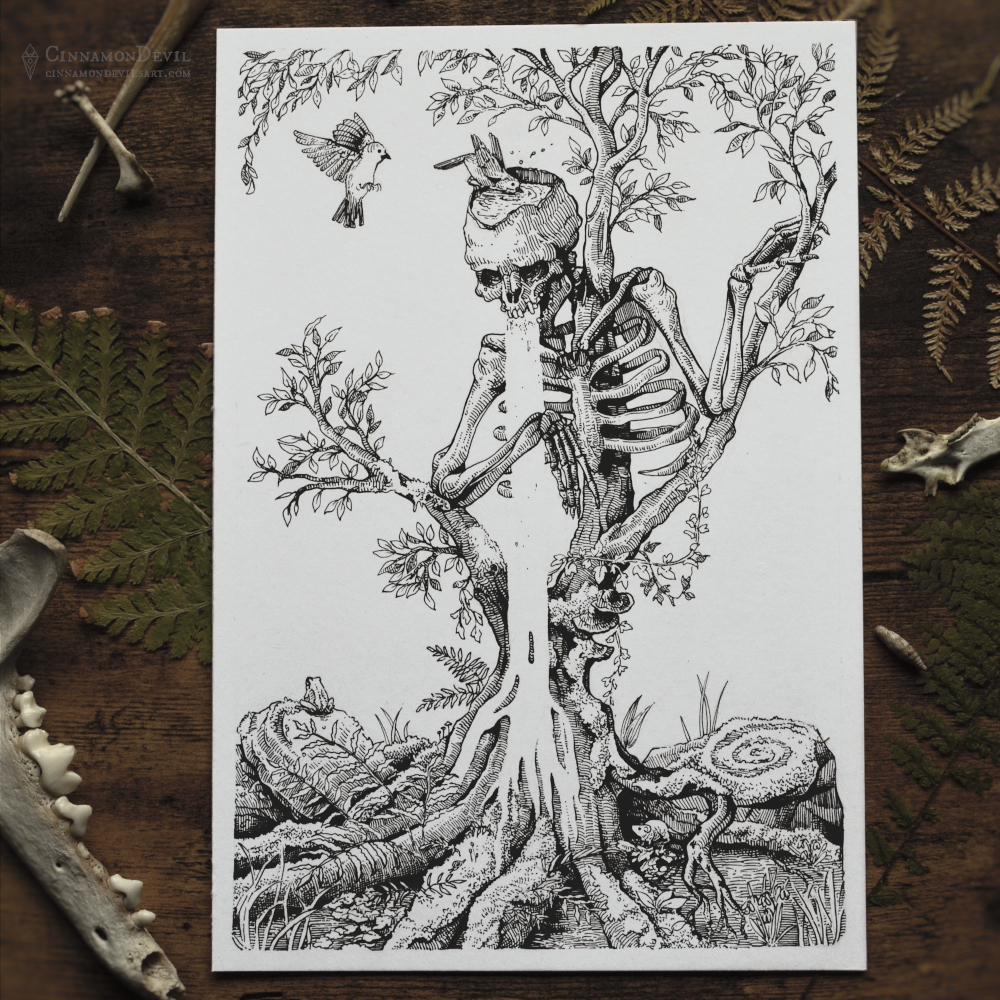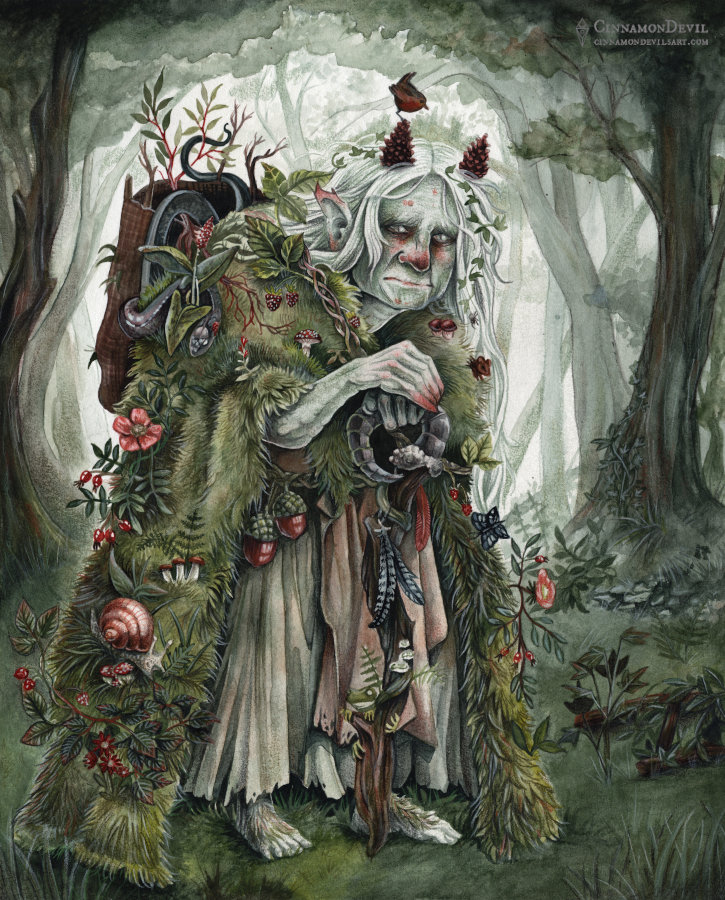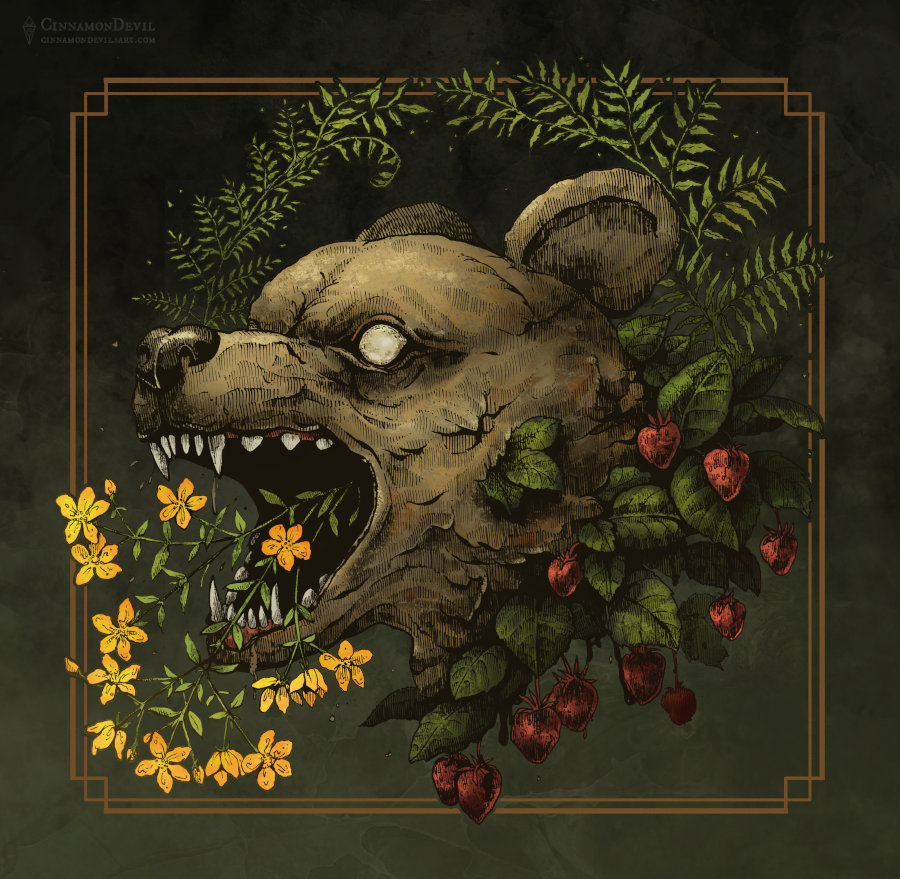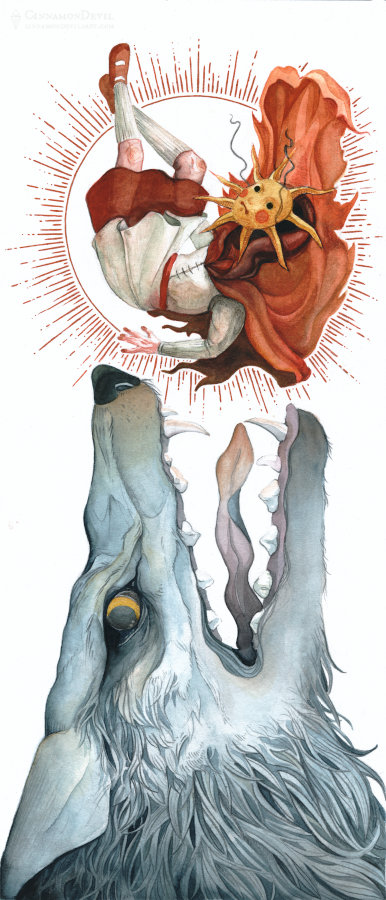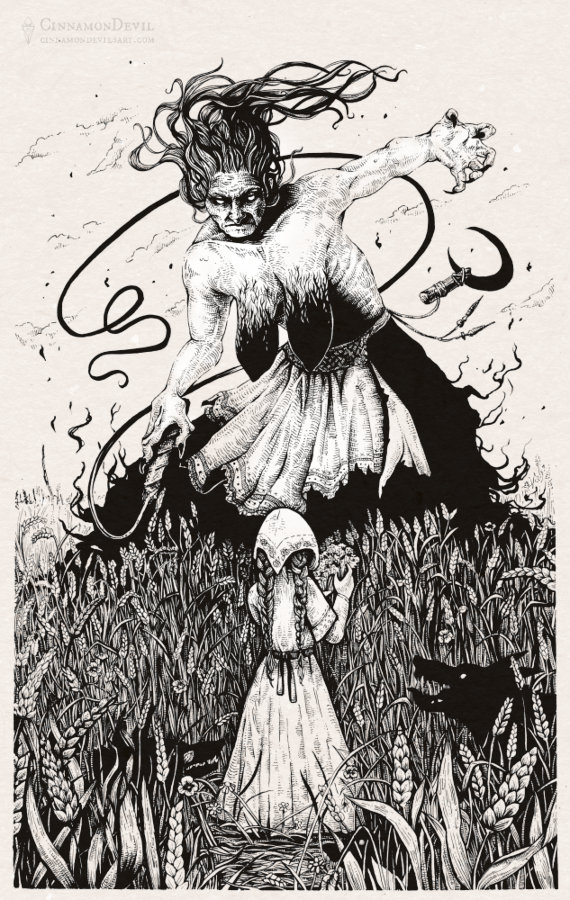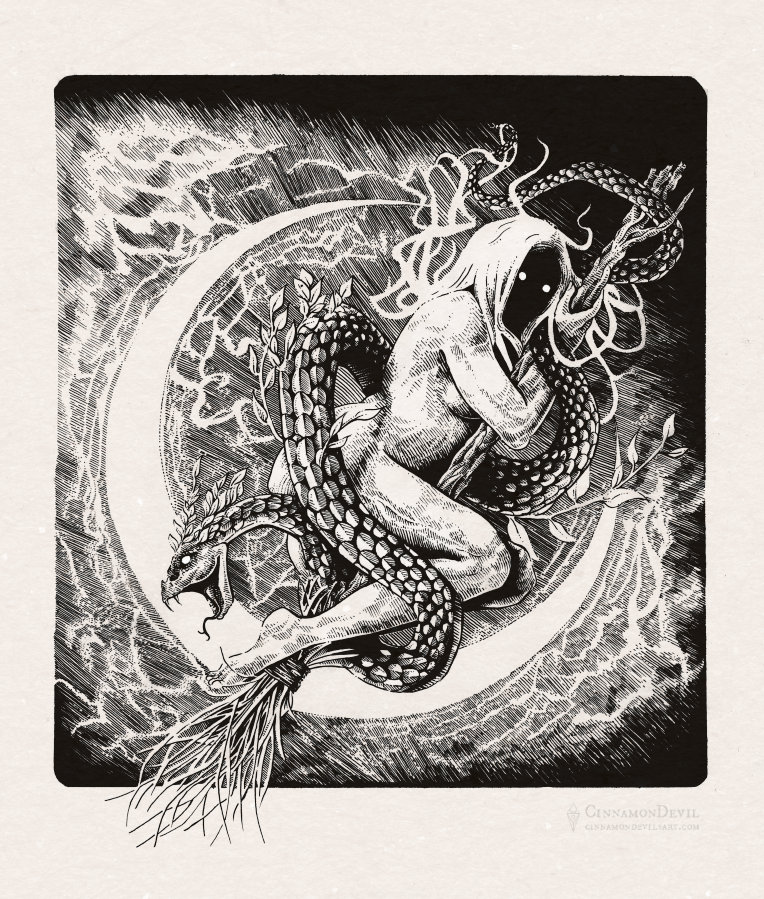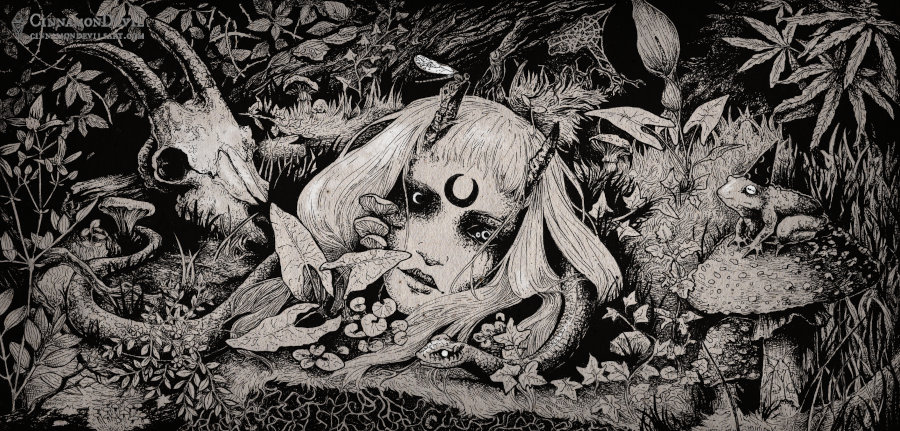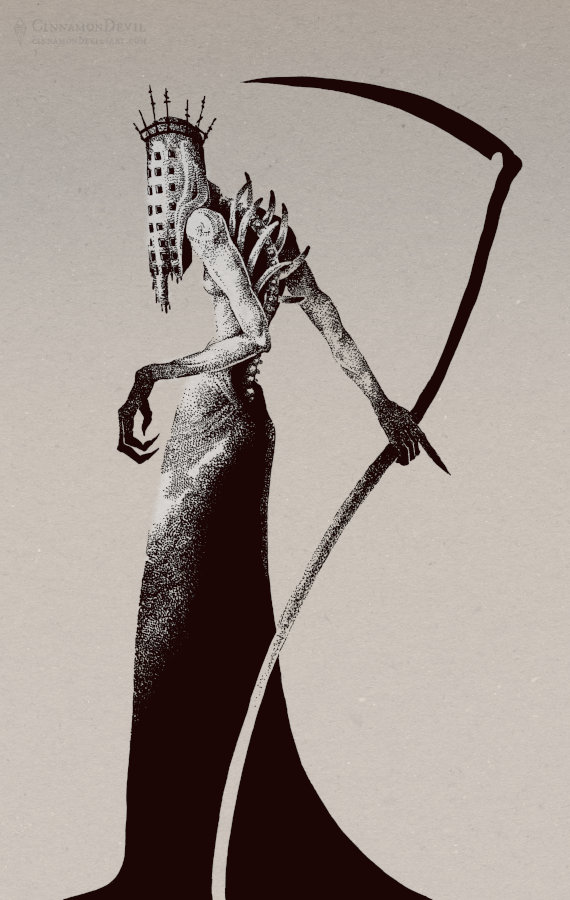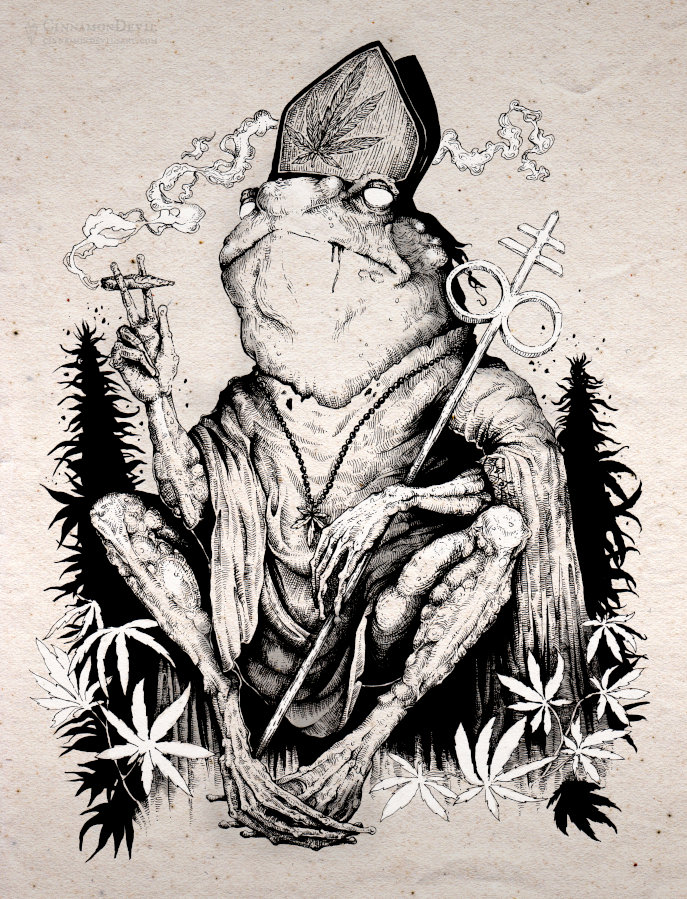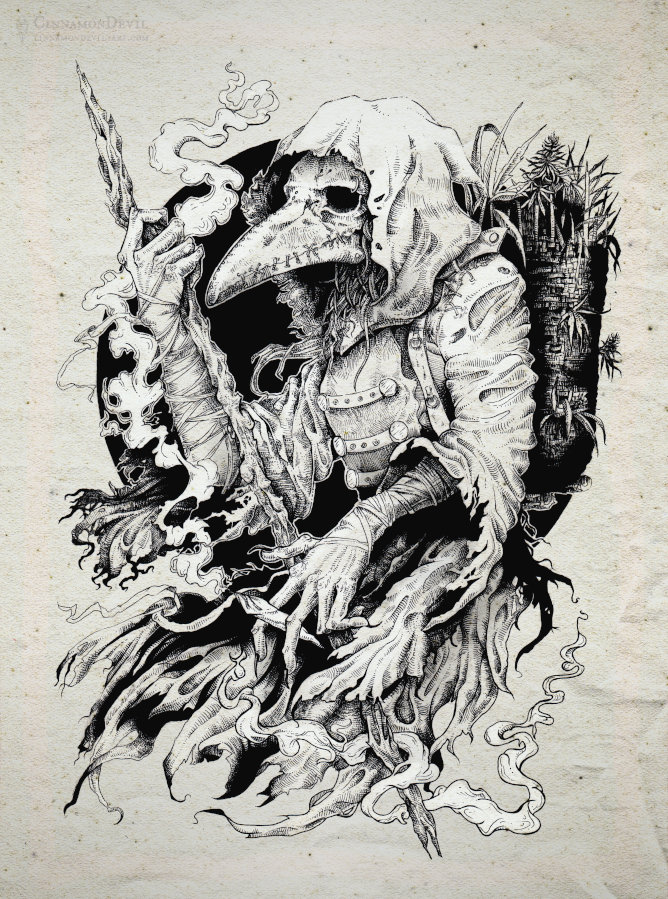My personal work is a trip through my mind: All dark and whimsical aspects of nature, folklore and everything that catches my interest.
Prints and original sketches are available in my Ko-fi Shop!
In the Bog
This piece is mainly inspired by a photo of the Tollund Man. Danish peat cutters found this more than 2000 year old bog body from the iron age during their work in a raised peat in the 1950s. The mummy is one of the best preserved finds of this kind. The Tollund Man didn’t die in the bog, but was rather tossed there after being hanged for crime or as a ritual sacrifice.The well preserved facial features and the calm, almost peaceful expression mesmerized me and I couldn’t wait to pick up my color pens and brushes.
The body is so well preserved thanks to the main characteristic of peat bogs: sphagnum moss. These mosses don’t have roots, they grow steadily and simultaneously die back at the base. The dead plant matter becomes entangled with other plants and sediments, building up layers upon layers of turf, about 1mm a year. Organic matter caught up in these layers is overgrown further and further. The decomposing process is nearly stopped, due to a lack of oxygen in water and peat as well as the quite acidic environment. If we would dig down 1 meter into the turf, we’d be able to find plants, seeds, ceramics, coins, bodies and much more from a century ago. That’s why peat bogs are also known as living archives.
In my artwork I tried to recreate a small part of a raised peat bog with typical plants such as Eriophorum (cottongrass) and Comarum palustre (marsh cinquefoil). You can also see red sphagnum moss patches forming hummocks and green mosses in the water. Also, a common European adder is passing by, who prefers habitats with high humidity.
Lady of the Woods
The Buschweibchen, roughly translated to Lady of the Woods, is a mythical creature in middle European Folklore. She is considered the Queen of the forest and mother to all woodland spirits. She appears as an old gammer with long white hair, wrinkles all over her face and moss on her feet. She is good willed, helps lost wanderers and if you help her carry her goods, she treats you with yellow leaves, which will turn into gold. The Buschweibchen is often associated with Frau Holle, an ancient Germanic goddess.
Midsummer Magick
Midsummer marks the longest day with the shortest night within a year. In locations close to the poles, the sun shines through out the whole night time, which is called Midnight Sun. Especially in the northern hemisphere, festivities around midsummer are widespread.
A plant associated with midsummer is St. John’s Worth. It’s yellow petals represent the sun and it contains photosensitive substances. Another plant is fern. It is said, that the magical properties of the mysterious fern seed are most noticeable around the midsummer days and are able to make one invisible or find hidden treasures. Many festivity dishes also contain strawberries, because they are quite abundant around this time.
Bears enjoy this abundant time, too. They wander large distances to find mates.
Sunset
Original work (2024). This piece is both inspired by norse mythology and Grimms’ fairy tale about Red Riding Hood. According to the Edda, the wolf Skalli is chasing the sun and will devour it during Ragnarök, while his brother Hati chases the moon.
In my work, the wolf also represents the night, that devours the day. Or even the winter taking away the summer sun.
Aunt Wheat
The Roggenmuhme (Aunt Rye) or in this case the Weizenmuhme (Aunt Wheat) is a central European field and weather spirit, who most often protects the crops from trampling passengers or children walking through the field to pick flowers. But she can also plague the fields in the form of storms, drought or pests. A pack of black wolves follow her every step. The spirit appears as an old hag, with saggy, long breasts, which are filled with blood or tar. She might use them to punch her victims or feed them with poisoned milk.
The Muhme also appears as Lady Midday, taking the lives of those who are working in the fields at high noon.
Creepy Huts
Original work (2024). Main inspiration for these designs is the slavic folk tale of Baba Yaga. The witch lives in a mysterious hut, standing and walking on one or two chicken legs. The chicken hut on the left also takes inspiration from an old German saying: “Jemanden den roten Hahn auf’s Dach setzen” (roughly: to set the red rooster on someone’s roof), which is a metaphor to set a house on fire. In Germany there is a an old saying about the red rooster on the roof – a metaphor for a flames consuming a house. A fire at night may occasionally resemble the fluffed plumage of a rooster. In some folk beliefs the rooster was associated with light, weather and fire spirits due to his early rising nature and brightly colored feathers. Today, the red rooster is still used as a guild emblem by some fire brigades.
